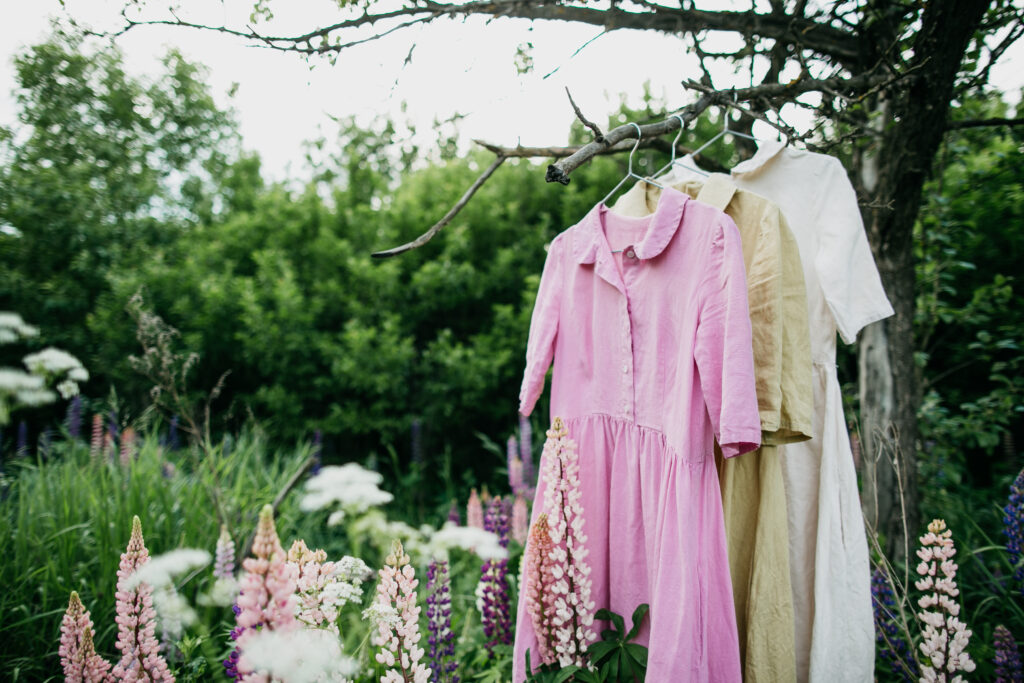Students Make Sustainable Fashion Statement
Winners of the Junior Academy Innovation Challenge Spring 2024: “Circular Textiles”
Sponsored by Royal Swedish Academy of Engineering Sciences (IVA)
Published August 14, 2024
By Nicole Pope
Academy Education Contributor
Team members: Rachita J. (India) (Team Lead), Mariia H. (Ukraine), Sofía R. (Colombia), Alex B. (United States), Sylvia X. (United States), Altynay N. (Kazakhstan)

Textiles and fashion are important sectors for the world economy but as demand increases, so do the environmental and human costs – due to harmful production processes that degrade natural resources and the mountains of textile items that are discarded every year.
Estimates suggest that 87% of global textile waste ends up in landfills or incinerators. These environmental impacts apply not only to the clothes we wear in our daily life, but also to the textiles used in the medicine, agriculture, and manufacturing sectors.
For the Junior Academy Innovation Challenge “Circular Textiles”, this international team of students came up with new suggestions to improve environmental standards in textiles, each member sharing their own insights to the design of their solution. “Throughout the project, everyone contributed their unique ideas and leveraged their specialized skills to advance our goals,” explains Sylvia. “The synergy within the team was palpable, fostering an environment of creativity and productivity.”
Collaborating online through the Academy’s Launchpad platform, the students divided the tasks across the group to develop their comprehensive plan. “I did some research and produced tables that consisted of the information about the project,” says Mariia. “I also contacted some experts and I was working on Lean Canvas.” The team found that technical textiles – engineered and manufactured with specific functions in mind – was a rapidly growing sector that reached US$213 billion in 2023, a 5.6% increase in the previous year.
Replacing Non-Sustainable Synthetics
The group focused on finding a sustainable replacement for fossil fuel-based synthetic yarns, nature-based materials like Rayon (viscose) that are linked to deforestation, as well as fibers like cotton that require water-intensive cultivation. They landed on Biofabrics as a potential solution. The students proposed addressing the three main drawbacks of Biofabric clothing – the expensive cost, the susceptibility to microbes, and the poor resistance to repeated washing – to create a more affordable, longer lasting product.
Their solution was using agricultural waste to optimize the production of a synthetic cellulose fiber called Lyocell and relying on deep eutectic solvents (DES) as an alternative to the more expensive chemicals traditionally used in cellulose extraction to reduce the cost. Another ground-breaking innovation involves the application of silver nanostructures to the Lyocell fibers, which would confer both greater durability and antibacterial properties to the fabric, and last more than 20 washes.
To tackle the pollution caused by fabric coloration, the team members suggested employing Direct Laser Interference Patterning (DLIP), a cutting-edge technique that uses laser beams to create nano-texture surfaces with precise interference patterns to impart vibrant colors without the need of toxic dyes.
Throughout the competition, the team’s schedule was intense. Finding time to meet across time zones was not always easy. “There were some challenges during the entire duration of the project, the biggest being the time difference,” says Team Lead Rachita. “I however tried to manage this by dividing the team further into teams and distributing tasks after getting approved by the entire team.” Team member Alex, for his part, created a spreadsheet to keep track of availability. “This helped us schedule meetings with as many people able to attend as possible,” he says.
Striving for Sustainable Textile Production
The students realized that, in addition to using technology to make textile production less damaging to the ecosystem, promoting circularity and sustainability in the sector also required raising awareness of environmental impacts among consumers, particularly in low and middle-income groups, which account for an estimated 90 percent of the global population.
They developed “EcoFashion,” an app designed to educate users of all ages and engage with them, which includes age-specific games aimed at toddlers and teenagers, challenges to motivate adults, as well as mini courses and interactive modules that deliver a wealth of information and leverage psychology to change consumer behavior.
For nine weeks, the team members worked long hours to develop their innovative approach and outline their findings in a polished presentation. “With the abundance of information and the high quality of research done by each team member, condensing it into a concise presentation was daunting,” says Sofia. “To overcome this hurdle, we collectively decided to put in extra hours, working diligently to summarize our findings effectively while ensuring the essence of our work remained intact.”
Their success, and the skills they acquired along the way while developing friendships across borders, made it all worth it. “The experience was great as it was the first time I did such a thing,” says Altynay. “I think such experience will help me in the future in researching other things, and in communicating with different people.”
Read about the other winner from the Spring 2024 Junior Academy Innovation Challenge:
Using Artificial Intelligence and Augmented Reality to Assist Dementia Patients
